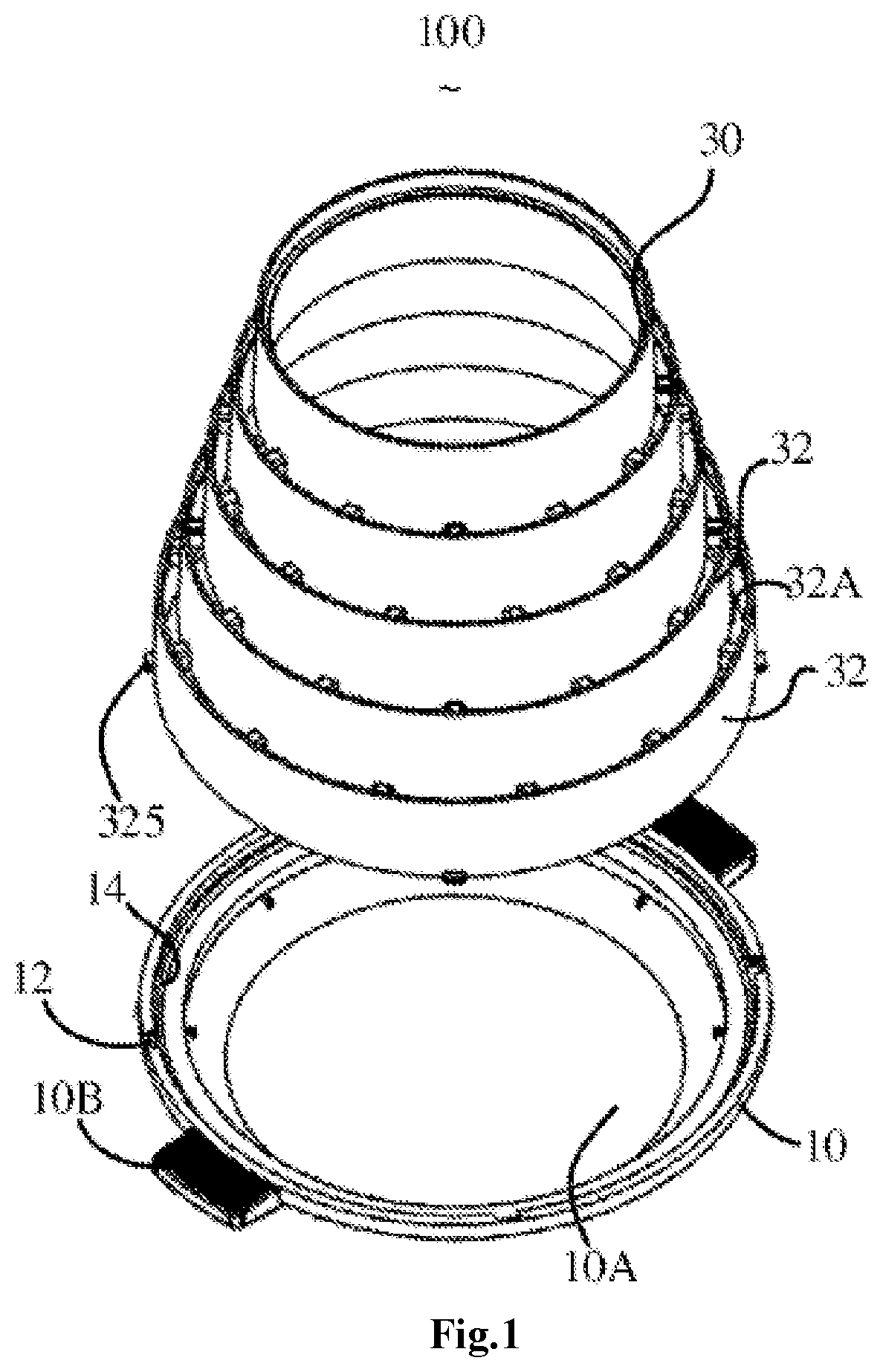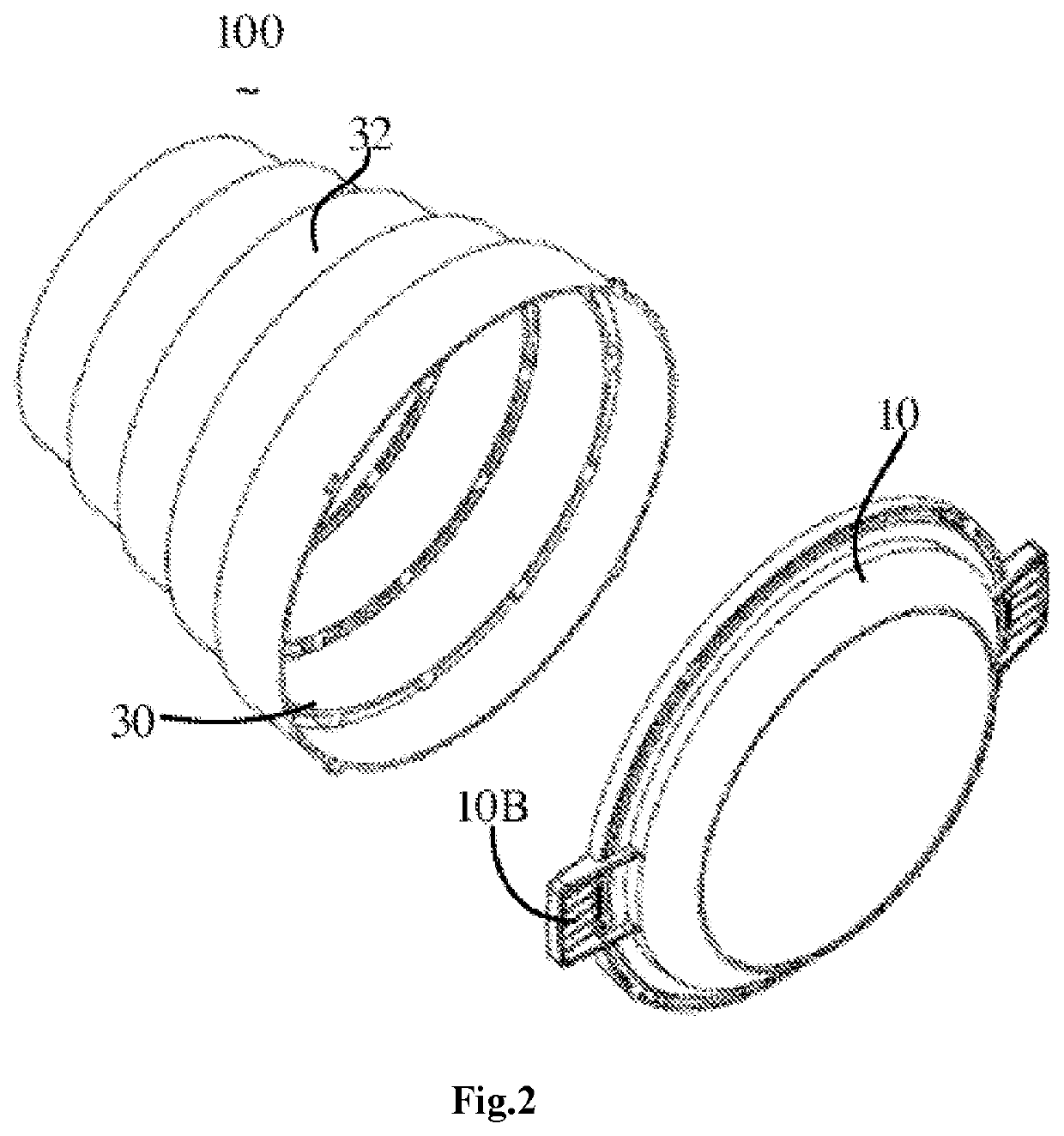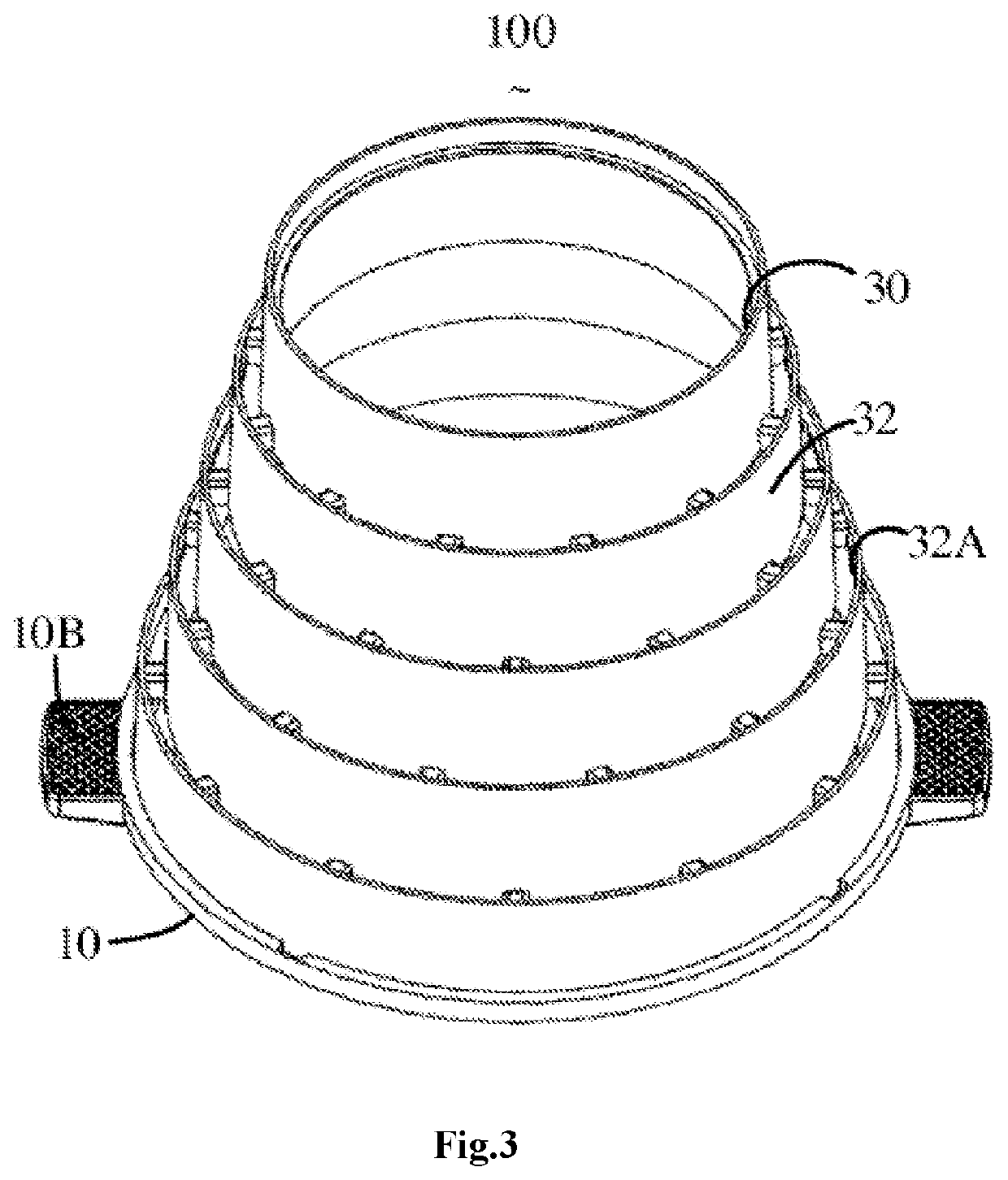Gas permeable flowerpot
a flowerpot and gas-permeable technology, applied in the field of flowerpots, can solve the problems of plants drying up, difficult for the current flower pots to make the soil gas-permeable, and maintain the soil at a certain degree of wetness, so as to prevent plants from dying, improve the absorption of gaseous pollutants by plants, and improve the ambient air quality
- Summary
- Abstract
- Description
- Claims
- Application Information
AI Technical Summary
Benefits of technology
Problems solved by technology
Method used
Image
Examples
first embodiment
[0020]Referring to FIGS. 1-4, the present invention provides a gas permeable flowerpot 100, comprising a tray 10, a flowerpot body 30, and a bottom plate 50.
[0021]The tray 10 has a round tray and comprises an accommodating trough (10A) for accumulating water. In this embodiment, the tray 10 further comprises left and right handles 10B extending from the lateral edges so that people can hold the handles 10B to move the flowerpot 100 and place it in different positions, such as a window sill, a balcony and the like. Each of the handles 10B also has a rough surface for the anti-slip purpose. In this embodiment, the tray 10 is made of a transparent material, such as glass, to facilitate the user to view the water accumulated therein to determine whether or not to water the potted plants, thereby preventing the plants from drying out. In other modified embodiments, the tray 10 may be made of other materials, for example transparent plastics, such as polymethyl methacrylate (acrylic), and...
second embodiment
[0034]Referring to FIG. 7 and FIG. 8, the present invention provides a gas permeable flowerpot 200, comprising a tray 210, a flowerpot body 230, and a bottom plate (not shown).
[0035]The gas permeable flowerpot 200 is similar in structure to the gas permeable flowerpot 100 provided in the first embodiment, except that the outer contour of each hollow subunit 232 is in the shape of an inverted circular truncated cone and the hollow subunits are stacked up to form the flowerpot body 230 and the adjacent hollow subunits 232 are integrally connected by reinforcing ribs 270. The flowerpot body 230 is formed by fastening a plurality of hollow subunits 233 by snaps or screws, and has a cylindrical outer contour as a whole.
[0036]In addition, as shown in FIG. 7, four projections 2325 are arranged on a lower edge of a hollow subunit 232 at the bottom, i.e., the hollow subunit 232 closest to the tray 210; correspondingly, the inner edge of the tray 10 is provided with four guiding grooves 212 a...
PUM
 Login to View More
Login to View More Abstract
Description
Claims
Application Information
 Login to View More
Login to View More - R&D
- Intellectual Property
- Life Sciences
- Materials
- Tech Scout
- Unparalleled Data Quality
- Higher Quality Content
- 60% Fewer Hallucinations
Browse by: Latest US Patents, China's latest patents, Technical Efficacy Thesaurus, Application Domain, Technology Topic, Popular Technical Reports.
© 2025 PatSnap. All rights reserved.Legal|Privacy policy|Modern Slavery Act Transparency Statement|Sitemap|About US| Contact US: help@patsnap.com



